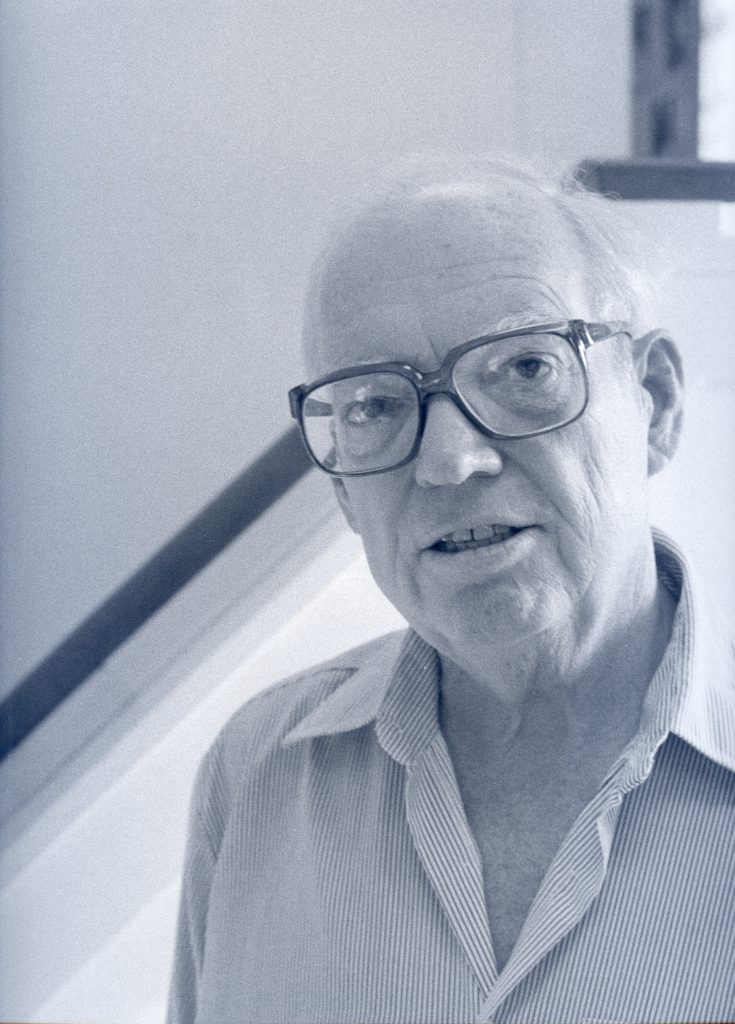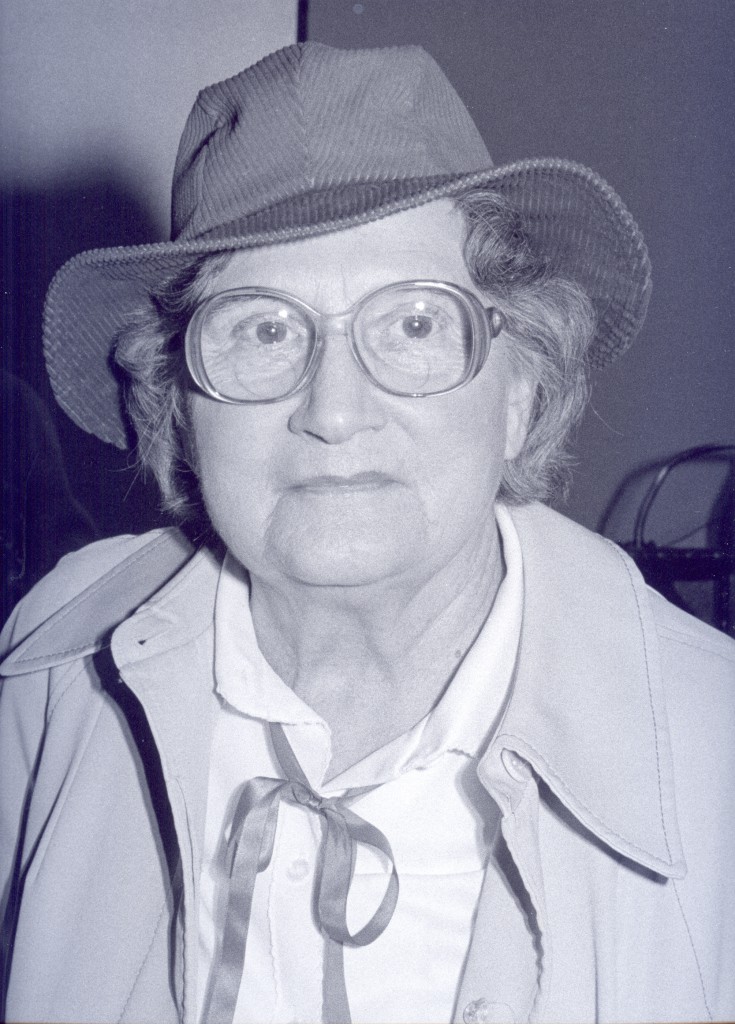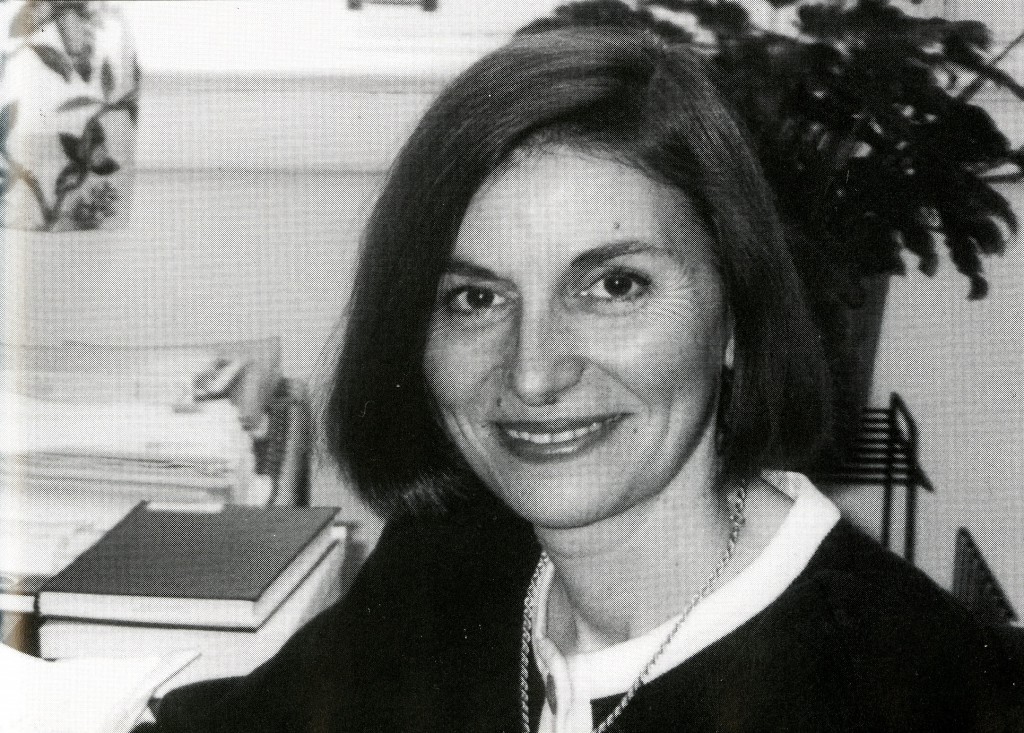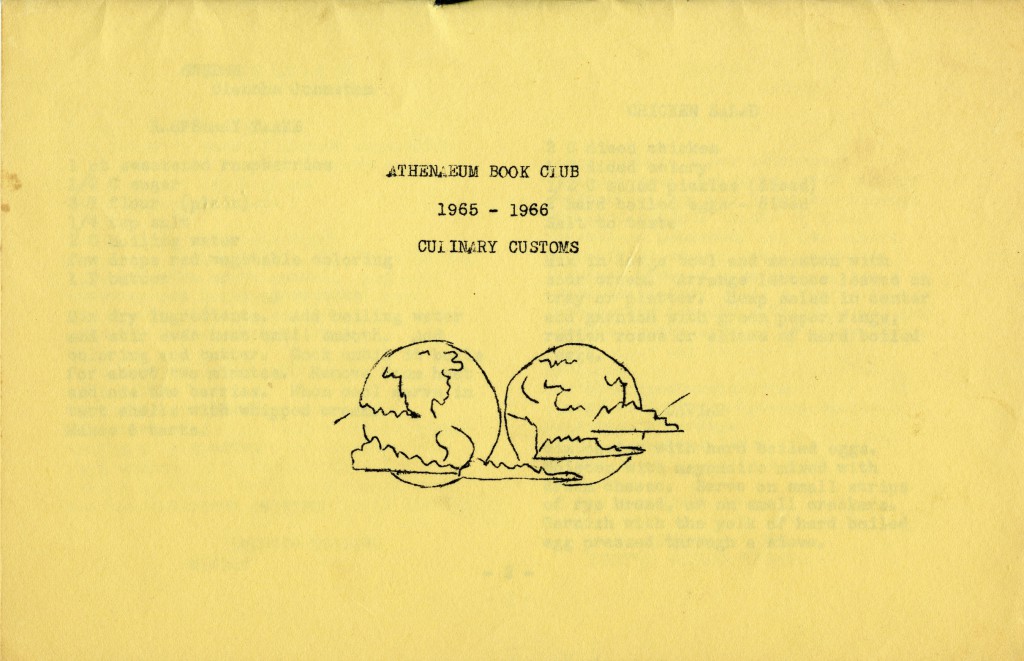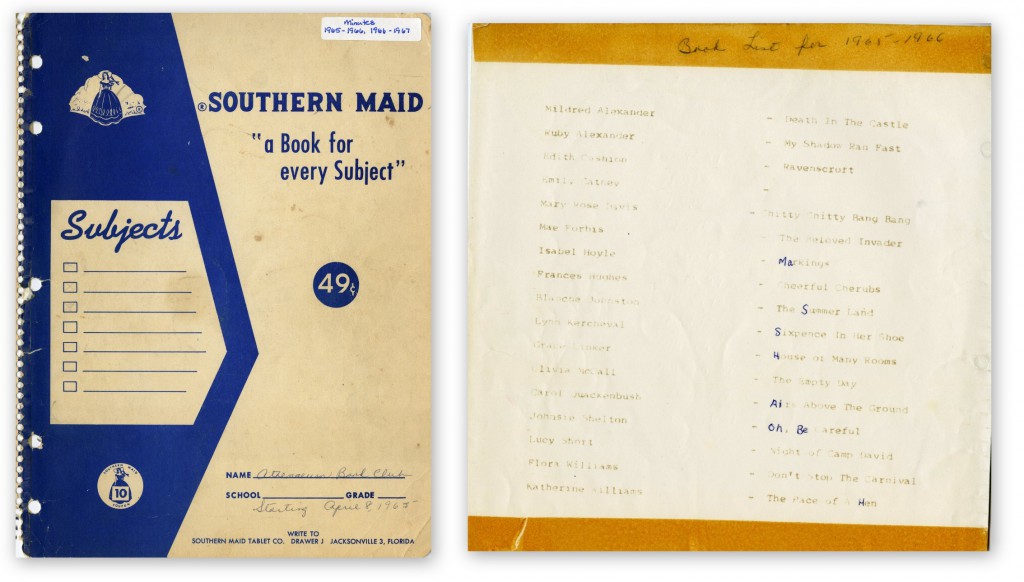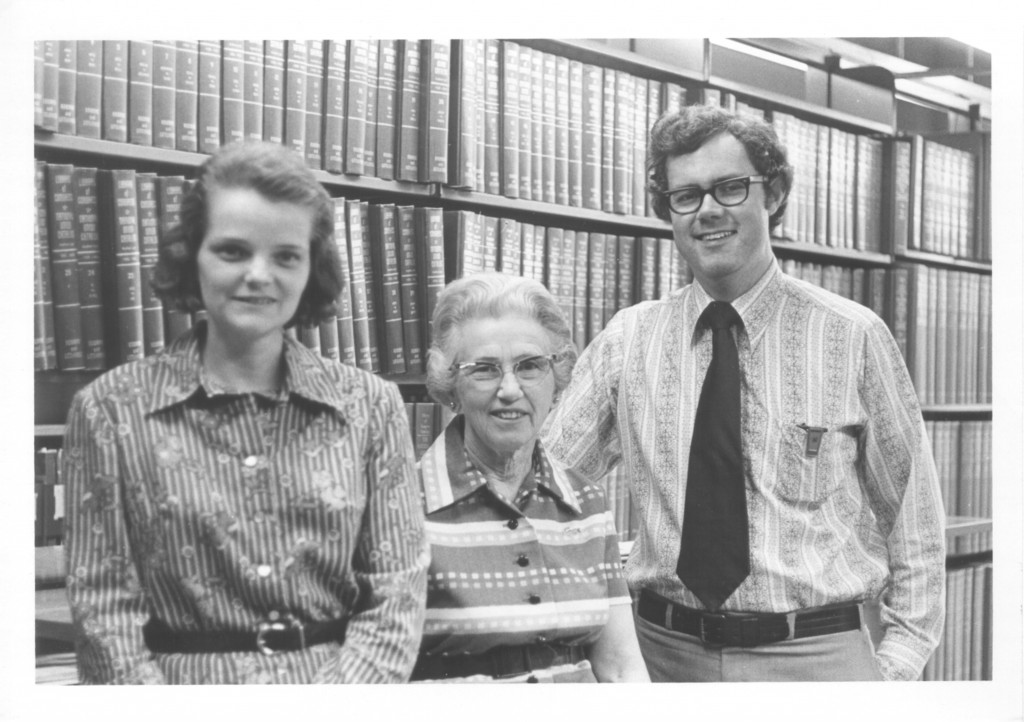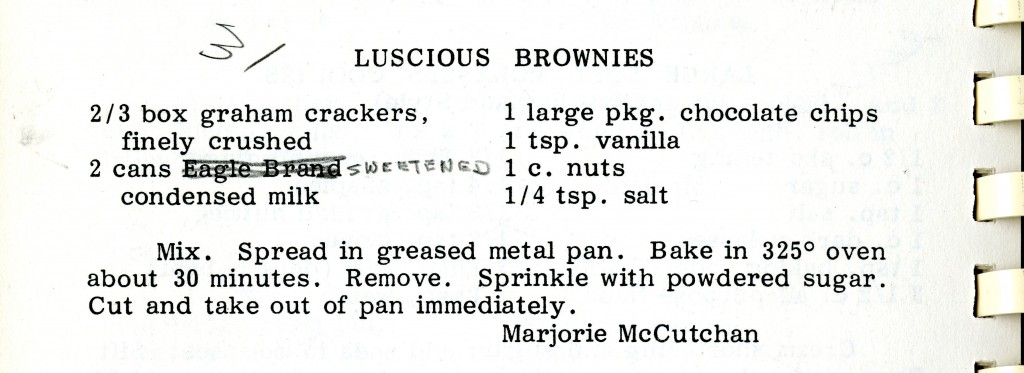This installment of Recipes from the Archives comes from the Davidson Civic Club’s Davidson Cook Book (circa 1928), the source of some of our favorite archival recipes. Our library colleague, Sarah Crissinger, is departing Davidson for a new position at Indiana University as their Scholarly Communication Librarian, so I made Ruth Strickland Hengeveld and Kalista Wagner Hood’s “Coffee Spice Cake” for her going away party in library today.
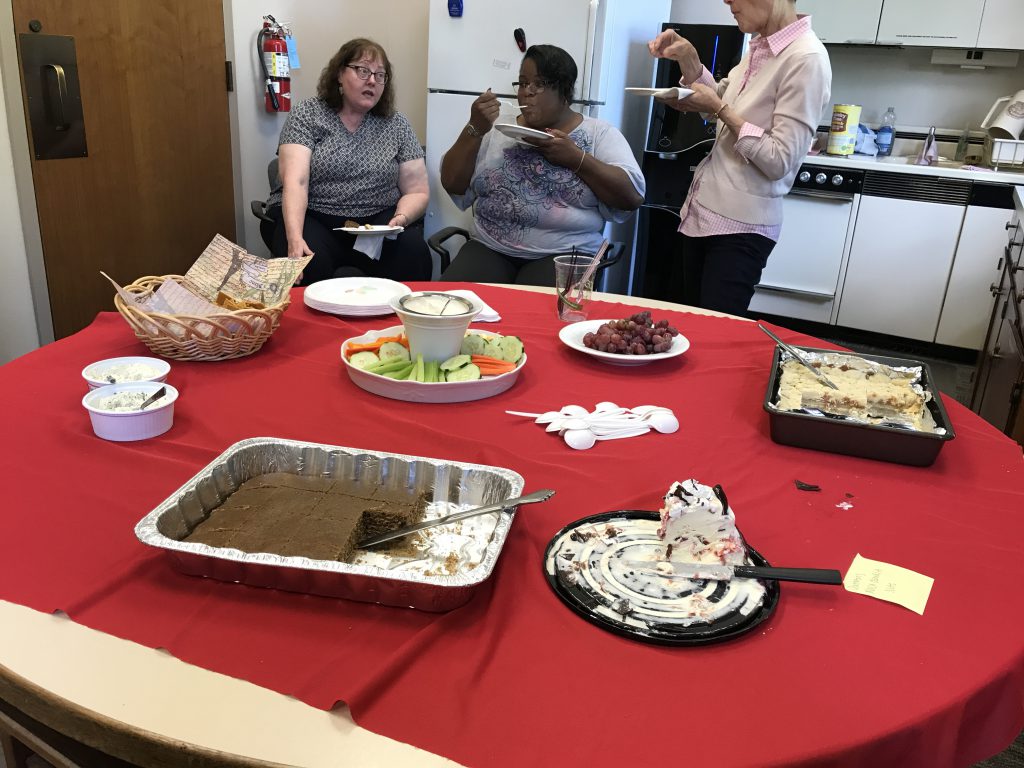
As I’ve previously discussed on other Recipes from the Archives blogs, sometimes finding out information about women in Davidson prior to the latter half of the 20th century can be difficult – most of the cookbooks in our collection are town compilations, and the recipe contributors might only be referred to by their husband’s first and last name. This week’s subjects, listed as Mrs. Fred Hengeveld and Mrs. Frazier Hood, were particularly difficult to track down information on. However, between files on previous faculty members, alumni records, and some clips of local newspapers, I was able to piece together at least small parts of these two women’s stories.
Kalista Wagner Hood hailed from Water Valley, Mississippi, and came to Davidson in 1920 when her husband, Dr. Frazier Hood (1875 – 1944), took a position in the psychology department. Dr. Hood received a B.A. from Southwestern University (Tennessee), and went on to study at the University of Mississippi and Johns Hopkins University before receiving a Ph.D. from Yale University. Prior to joining the faculty at Davidson, Dr. Hood served as a first sergeant on the army psychology examining board during World War I and taught at Hanover College (Indiana), the University of Oklahoma, and West Tennessee Teachers’ College.
The Hoods married in 1903 and had one daughter in 1906, Kalista Hood Hart. The younger Kalista studied at St. Mary’s school in Raleigh, Le Femina in Paris, the Jessie Bonstelle School of Dramatics, and the American Academy of Dramatics and acted on Broadway before returning to Davidson and directing plays at the college. She married a Davidson alumnus, Walter Lewis Hart (Class of 1930), in 1945, and one of the upperclassmen apartment buildings on campus is named for the Harts.
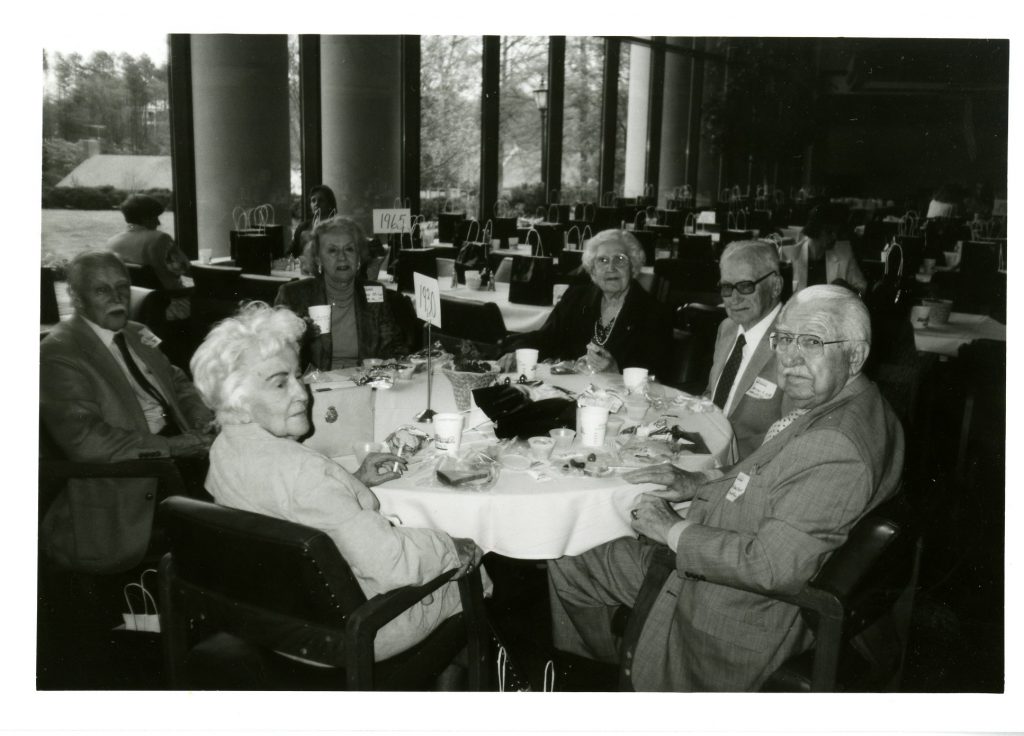
According to recollections written by Dr. Chalmers G. Davidson, in 1927 the Hoods “developed Davidson’s only approach to a ‘country seat.’ A mile from the college they purchased a magnificent wooded hill top and began construction of ‘Restormel,’ christened for a castle of the Hood forebears in England but connoting in the name the refuge from routine they intended despite the hurricane winds of the locality… For a lawn seat under the largest oak, they secured the first step of old Chambers Building (1859) when the portico was razed in 1927.” After her husband’s death. Mrs. Hood built a new home closer to the center of town, on Concord Road. Mrs. Hood attended Washington College in Maryland, and was an active member of the Booklovers’ Club, as well as contributing recipes to the Civic Club’s cookbook. She passed away in 1960.

Ruth Strickland Hengeveld moved to Davidson in 1921, after marrying Fred W. “Dutch” Hengeveld (Class of 1918), who coached the basketball and baseball teams at the college in the early 1920s, and served as the college Registrar from 1922 until 1967 and as the Director of Admissions from 1946 to 1967. She hailed from Waycross, Georgia, which was also the hometown of her husband. The Hengevelds had two children, Virginia Hengeveld O’ Harra and Fred W. “Little Dutch” Hengeveld, Jr. (Class of 1951). The family lived on the corner of Concord Road and College Drive for many years, and Ruth Hengeveld passed away in 1970.

Kalista Hood and Ruth Hengeveld’s coffee spice cake is a simple recipe, and its coffee flavor is subtle. It stood out from the other spice cake recipes in the cookbook due to the use of coffee – I brewed Cafe Britt’s Costa Rican Poas Tierra Volcanica blend for the 3/4 cup of cold coffee needed.

Like many recipes from the Civic Club’s Davidson Cook Book, directions are sparse – since a baking temperature wasn’t given I set my oven for 350° and checked the cake every five minutes or so. Because I don’t have a good loaf pan, I used a sheet, which I think sped up the baking process since the cake was thinner. Overall, folks at Sarah’s going away party gave rave reviews – although the cake is very simple, it’s also very tasty!

